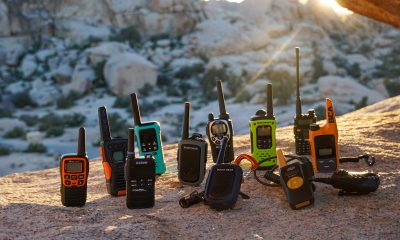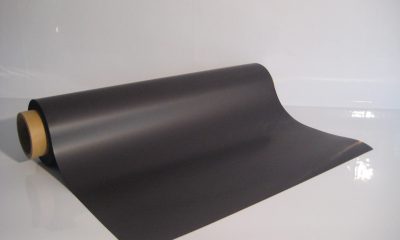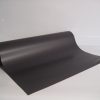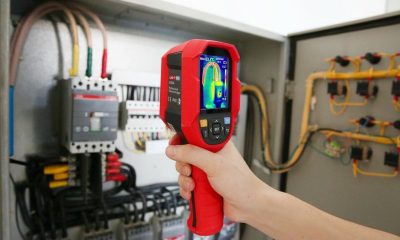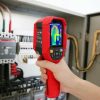Tech & Gadgets
Choose Beneficial Deep Cycle Batteries for an Efficient Solar System
Deep cycle batteries have been the preferred method of off grid solar energy storage of RV, caravan, and boat owners for a long time. But as the applications and demands for solar storage have changed, the technologies driving deep cycle battery design have also had to change.
Flooded lead-acid batteries were once the only choice. They’re powerful and reliable, but their finicky nature has always meant that maintenance and handling needed to be prioritized as much as their charging capacity.
Today, however, all types of sealed batteries can be found in deep cycle storage service. From high-capacity lead carbon cells to lightweight lithium-ion units with endless lifespans, the benefits of modern deep cycle batteries are especially important for solar power storage. You can’t afford to overlook the value that any of them could bring if you’re going off grid, so let’s take a look at how far deep cycle innovations have brought us.
Solar Batteries Do It All
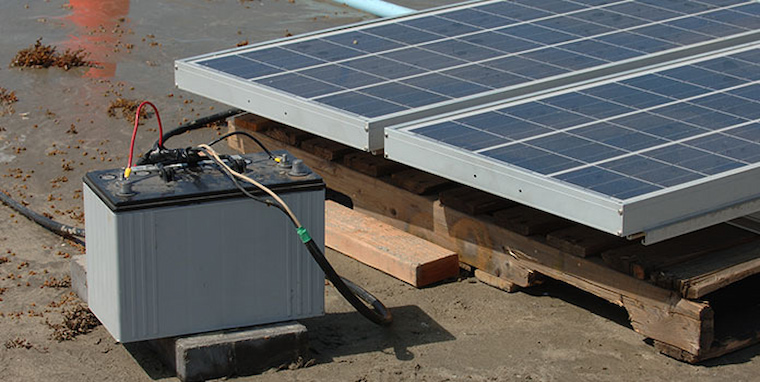
Let’s be honest: the ability to store surplus solar power is the whole key to solar power efficiency. And by nature, the batteries used to store surplus energy also have to be capable of functioning as sources of power generation too. That’s why in addition to being scalable and affordable, deep cycle batteries for solar panels also have to be 100% reliable.
They have to be able to power an RV’s fridge, lights, and much more. And as their name implies, they have to be able to fully recharge quicker and deeply discharge more of their capacity slower than ordinary standby power batteries. They have to do it all, and they have to be able to do it under a full array of environmental extremes.
What Types of Solar Batteries Are There?
There are three main varieties of deep cycle solar batteries for sale, including several popular subvariants within them. They’re all very capable performers, but physical attributes, like size and weight, along with their charge efficiency will quickly determine which variant is the best for a specific use.
- Flooded lead-acid batteries
These old school, wet-cell batteries consist of rows of heavy lead plates submerged in an electrolyte solution of water and sulfuric acid. They’re the reliable, deep cycle solar batteries Australia has depended upon for decades to deliver large amounts of inexpensive, off grid power. The trade-offs for their cost and reliability, however, is that they’re big, have a charge efficiency of only 80%, and have a relatively short cycle life. They also require that their corrosive electrolyte be refilled regularly, and they do emit poisonous gases during recharging.
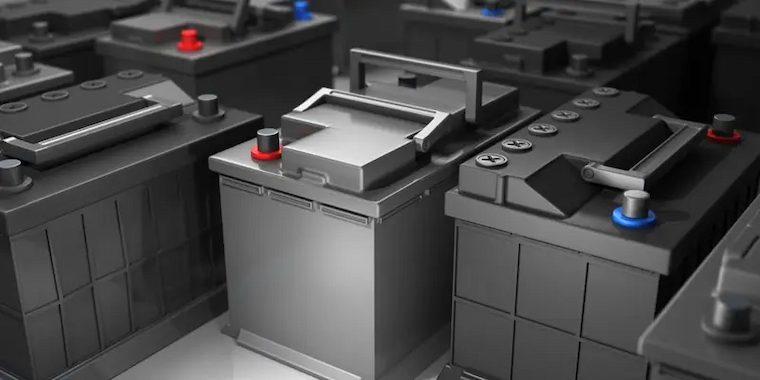
- Valve regulated lead-acid (VRLA) batteries
VRLA batteries, consisting of gel, AGM (absorbed glass mat), and lead carbon subvariants are sealed solar battery cells that rely on a combination of paste-like electrolytic solutions and electrolyte-saturated fibre mats to generate their charges. They’re more expensive than wet-cell batteries, but they’re maintenance-free since their cycle life is roughly three times longer than a wet-cell, and they boast a charge efficiency of over 90%. Lower internal resistant also allows them to charger faster than wet-cells, but they’re not as tolerant of over-charging.
- Lithium batteries
Compact and maintenance-free lithium-ion and lithium iron phosphate (LiFePO4) are the safest and longest lasting of deep cycle batteries. The former uses a lithium cobalt dioxide to create a charge, while the later uses a more environmentally friendly lithium phosphate salt electrolyte. Both, however, have a charge efficiency of almost 99% and a cycle life 10 times longer than wet-cells. That gives lithium cells the clear advantage over all other types of solar storage batteries, except in price. They’re expensive, but they’re also a one-time purchase for most solar system owners.
How Many Batteries Do You Need?
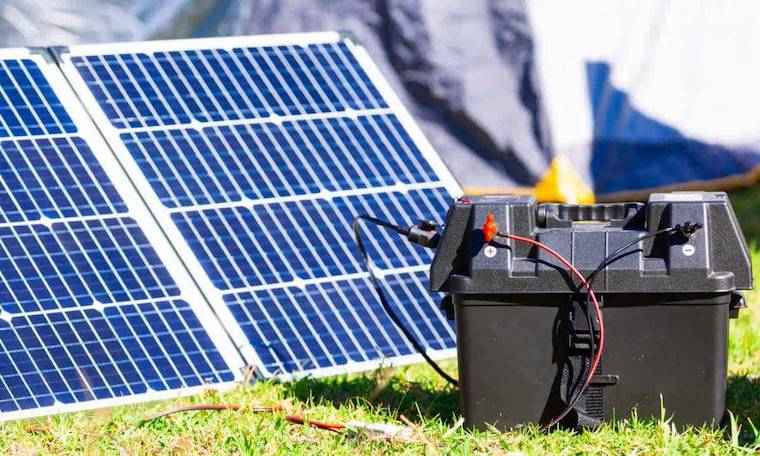
If you have a solar system that you’re considering adding energy storage capacity to, assessing how many amp hours (Ah) of capacity you’re currently using, and anticipating how many you expect to need, will help you determine how many deep cycle batteries for solar panels your system’s going to need. You can’t mix and match battery variants, so aside from their specific traits, there are a number of precise parameters you’ll have to consider here as well, such as:
- Individual battery voltage. Whether the battery’s voltage needs to match your system’s voltage, or whether you’ll be using some type of power conversion.
- Individual battery capacity. The amount of energy a deep cell battery is designed to store in amp hours is going to determine how acceptable its charging and discharging rate will be.
- Battery life cycle. The number of full charge and discharge cycles the battery can perform before its capacity permanently drops.
- Battery depth of discharge (DoD). The maximum percentage of a battery’s capacity that it can be expected to discharge.
- Battery price. Price really matters in battery storage, because you can count on going through three times as many batteries over the life of your system if you’re using the least expensive type.
In reality, there isn’t a straightforward answer to the exact number of solar batteries you should buy for your system. It depends entirely on factors such as:
- How much time you spend off the grid;
- How much power you use when you’re off the grid; and,
- How much time you’re prepared to put into maintaining your system.
The location and conditions of your solar battery storage can also make a difference. The temperatures they’ll be used and stored at are also critical for choosing the right battery and failing to consider their surroundings can lead to big problems later.
Consider Your Battery Environment
The environment that solar system batteries are installed in needs to be assessed just as carefully as a battery’s technical specifications. Each variant has its own advantages, but some perform better than other under certain conditions than other. That’s why you’ll need to answer the following questions when making a selection:
- Is the storage for a marine or terrestrial solar system? The excess motion and vibrations from waves, and corrosion from salt can affect battery life and performance, so you’ll specifically need a deep cycle marine battery for a boat.
- What kind of space is available? A deep cycle battery bank can take up a lot of space depending on how much power is needed, so you’ll need to be mindful of how much room you’ll have for storage and maintenance, along with proper provisions if the batteries require additional climate control or ventilation.
- How much weight can you afford? Battery banks, especially ones using classic wet-cell RV batteries, can be extremely heavy, so it’s absolutely essential to keep your vehicle’s maximum allowable weight in mind.
The Conclusion
What you want are deep cycle batteries for solar panels that can deliver the most efficiency in capacity, mobility, and cost. There are batteries available for all applications, and a portable solar power expert can help you design a storage system that’s just right for you.
At the end of the day, it’s important to remember that storage batteries aren’t just a convenient addition to your solar system. They’re the actual power generators when the sun’s not shining, so you have to invest wisely in your battery storage solutions.
Writing for the blog since 2012, Chris simply loves the idea of providing people with useful info on business, technology, vehicles, industry, sports and travel – all subjects of his interest. Even though he sounds like quite the butch, he’d watch a chick flick occasionally if it makes the wife happy, and he’s a fan of skincare routines though you’d never have him admit that unless you compliment his impeccable skin complexion.



